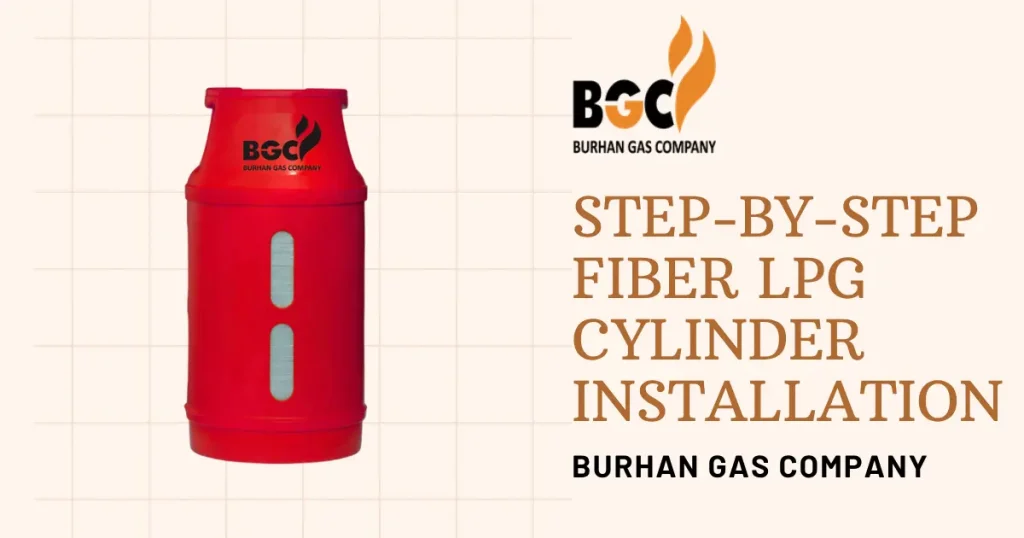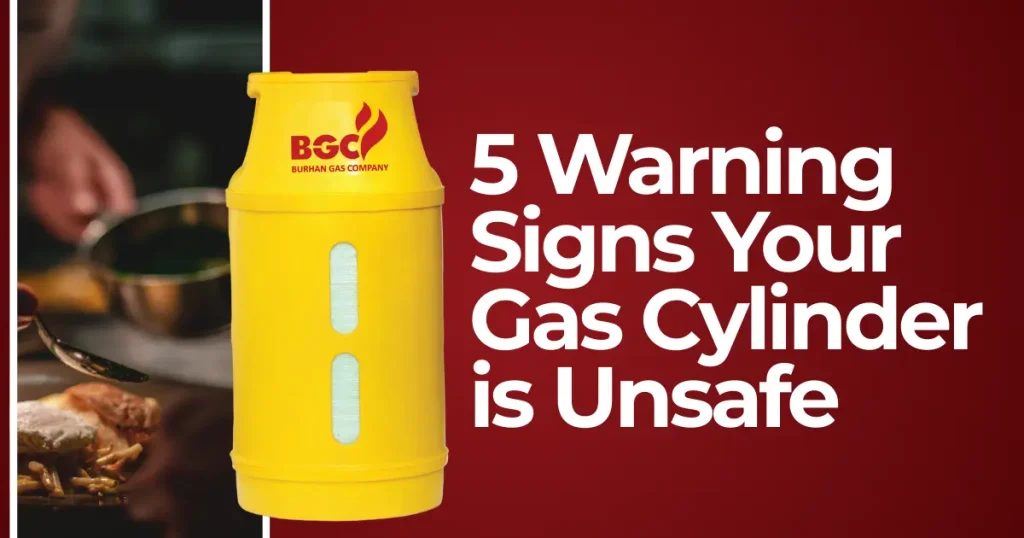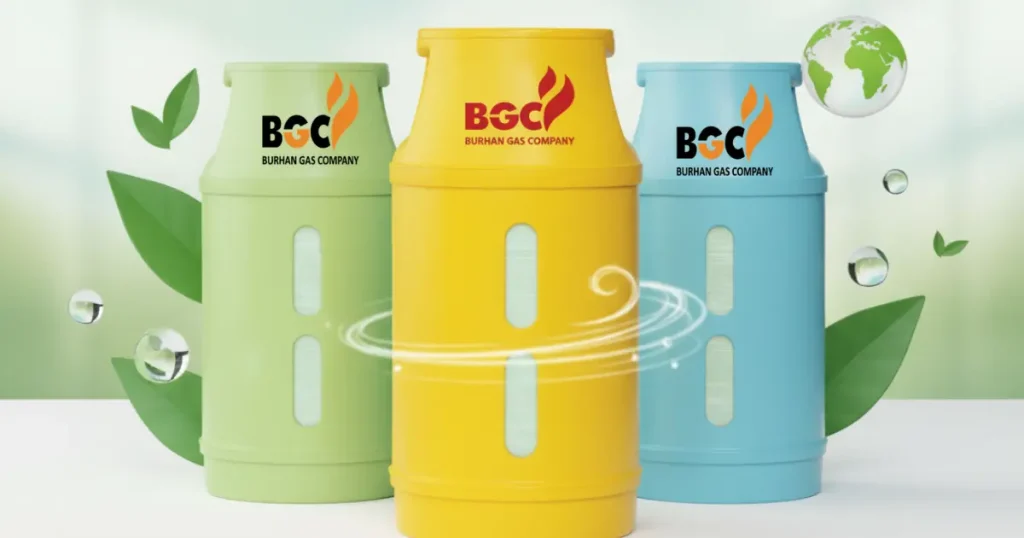Fiber-reinforced (composite) LPG cylinders are becoming increasingly popular worldwide — from domestic kitchens to restaurants and caravans — due to their lightweight design, corrosion resistance, and safety features. Unlike traditional steel cylinders, these modern cylinders typically use a clip-on regulator system, simplifying operation and improving user safety.
Before setting up a composite LPG cylinder, it’s crucial to follow essential safety precautions and correct installation procedures — as recommended by international manufacturers such as Hexagon Ragasco (Norway), Aburi Composites (UK), and BGC (Pakistan) Composite Cylinders.
Safety First
A safe installation begins with proper preparation. Always follow these key safety steps before connecting your new LPG cylinder:
1. Clear the Area
Ensure the installation site is well-ventilated, away from open flames, electrical switches, or sparks. LPG is heavier than air, so it can accumulate in low areas — ventilation is essential.
2. Inspect the Cylinder
Check your new composite cylinder for visible damage such as cracks, & deep scratches. Never use a cylinder that looks damaged or is leaking. All approved LPG composite cylinders are factory-tested according to ISO 11119-3 and EN 14427, but handling damage can occur during transport or storage.
3. Use Approved Equipment
Only use certified regulators, hoses, and appliances compatible with LPG composite cylinders.
- Regulators must be of the clip-on type, rated for the correct pressure (usually 28–30 mbar).
- The gas hose should be free of cracks or wear and within its expiry period.
- Your gas appliance must be approved for LPG use by the relevant safety authorities.
Step-by-Step Composite Fiber LPG Cylinder Installation Guide
Step 1: Prepare the Cylinder
- Keep the cylinder upright and place it on a flat, stable surface in its final location.
Step 2: Connect the Regulator
- Ensure the regulator’s switch is in the “OFF” position (usually horizontal or at 3 o’clock).
- Align the regulator directly over the valve outlet.
- Press the regulator straight down until you hear a clear “click” — this indicates the connection is locked.
- Release the locking ring and pull up gently on the regulator to confirm it is securely attached and cannot be removed easily.
Tip: Leading international manufacturers recommend checking that the clip-on regulator sits flush and firm, with no visible tilt or looseness.
Step 3: Test for Leaks
- Turn the gas on by moving the regulator switch to the “ON” position (usually vertical or 12 o’clock).
- Prepare a soapy water solution (a few drops of dish soap in water).
- Apply the solution to all joints — especially between the regulator and the cylinder, hose connections, and the appliance inlet.
- Watch closely for bubbles. If any appear, turn the gas off immediately.
- Retighten the connections and re-test.
- If bubbles still appear, turn off the gas and contact your LPG supplier — do not attempt to fix it yourself.
Step 4: Turn On the Appliance
- Once no leaks are detected, open the gas valve on your appliance.
- Light the match or lighter first, then turn on the burner knob (never the other way around).
- Check that the flame burns steadily with a blue color — indicating proper combustion.
Additional Safety Tips
Proper Storage
- Store the cylinder outdoors or in a well-ventilated area, away from direct sunlight, heat, or ignition sources.
- Always keep the cylinder upright, even when not in use.
Routine Checks
- Regularly inspect the hose for cracks or aging. Replace it before the printed expiry date.
- Check the regulator and valve for any wear or damage.
- Ensure the O-ring inside the regulator is intact — replace if hardened or cracked.
Emergency Procedures
If you smell gas or suspect a leak:
- Immediately turn off the regulator.
- Do not ignite flames or operate electrical switches.
- Open all doors and windows for ventilation.
- Contact your LPG distributor or emergency service.
International Best Practices
Leading global composite cylinder producers follow standardized safety and installation guidelines:
- Hexagon Ragasco (Norway) recommends always using clip-on regulators certified to EN 16129 and conducting a bubble test after every cylinder replacement.
- BGC (Pakistan) emphasizes upright positioning, clean valve outlets, and approved hoses no longer than 1.5 m for domestic use, and also suggests periodic inspection of regulator torque and replacement of sealing components as per ISO 13341 requirements.
These practices align closely with global standards such as ISO 11119-3, EN 14427, and ISO 11623 (for periodic inspection).
Conclusion
Installing a fiber LPG cylinder correctly ensures safe operation, long service life, and reliable performance. The clip-on system makes connection quick and easy, but attention to detail — especially during leak testing and routine inspection — remains critical.
By following this simple guide and adhering to international best practices, you can enjoy the full benefits of modern composite LPG cylinders with confidence and safety.





